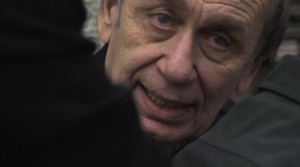Federal Funds Will Save 65 Films from Deterioration
Last month (June 2014), 65 films held by 35 institutions in 22 U.S. states received grants from the National Film Preservation Foundation as part of its annual cycle of support for films deemed historically important.
During the next week or two, you can read on this site articles about some of them.
The series begins today with features about early color footage of Yellowstone National Park, films taken by the NOAA National Severe Storms Laboratory that improved prediction of storm patterns, and footage captured by a prominent figure in the early years of Anchorage, the largest settlement of Alaska.
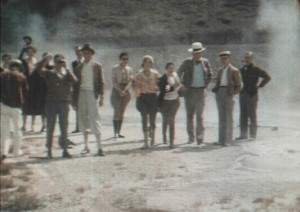
The Yellowstone Kodacolor; National Archives And Records Administration
The Yellowstone Kodacolor; National Archives And Records Administration
The National Film Preservation Foundation helps archives, historical societies, libraries, museums, and universities preserve and make available American films that are not likely to survive without public support. Since 1998, it has provided preservation resources to 273 organizations. Recipients have been based in each of the 50 states, the District of Columbia, and Puerto Rico.
The NFPF is the nonprofit organization that the U.S. Congress created in 1996 to help save America’s film heritage. Congress took that action at the recommendation of the U.S. Library of Congress following four years of hearings and research by the Library’s National Film Preservation Board. In 1992, Congress asked the Librarian of Congress to assess the state of film preservation and learned that motion pictures were disintegrating faster than archives could save them. The Librarian’s report revealed that the films most at risk were documentaries, silent-era films, newsreels, historically significant home movies, avant-garde works, “industrials,” and independent (non-Hollywood) feature films, an “other” motion picture heritage that fell outside the scope of commercial preservation programs, and scattered in institutions nationwide.
It has supported film preservation projects involving more than 2,000 films since it began its work in 1997 with initial support from the Academy of Motion Picture Arts and Sciences and The Film Foundation. It now operates with funding from the federal government via the U.S. Library of Congress under the authority of The Library of Congress Sound Recording and Film Preservation Programs Reauthorization Act of 2008, as well as with privately donated money.
As a condition of its grants, it asks organizations to attempt wide distribution to schools and colleges, as well as through screenings, exhibits, DVDs, televisions broadcasts, and the Internet. The program targets orphan films – newsreels, independent films, documentaries, and avant-garde, ethnic, and public domain material that are unlikely to have or be preserved because they are not owned or backed by studios or organizations. They must have been made in the United States or by American citizens abroad and may not be films already being safeguarded by commercial interests. Materials originally created for television or video are not eligible, including works produced with funds from broadcast or cable television companies.
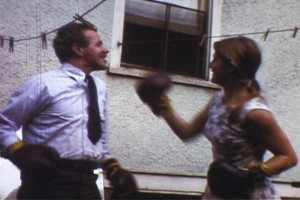
Bogus Boxing Trash, Part One (1969), rock critic Richard Meltzer’s epic film on boxing. Film-Makers’ Cooperative
The grant must be used to pay for new laboratory work involving the creation of new film preservation elements, which may include sound tracks, as well as two new public access copies, one of which must be a film print, and that must have closed captioning in the case of sound films destined for Web or television exhibition.
In the cycle of grants just announced, the NFPF identified for support a wide range of films including The Jungle, a 1967 portrayal of Philadelphia street life made by teen gang members; Hoagy Carmichael’s home movies of his family’s first Hollywood years; and actor Richard Beymer’s documentary short made in the midst of the Freedom Summer civil rights campaign.
“These films demand our attention and deserve to be viewed anew,” Jennifer Horne said upon announcement of the awards. An assistant professor of film and digital media at the University of California at Santa Cruz and member of the National Film Preservation Board, she and other panelists reviewed proposals from around the United States. “With these NFPF grants, archives around the country will be able to preserve important pieces of our heritage and make the films available once again,” Horne said.
Also identified for preservation in this cycle were ornithological studies of New York’s Jamaica Bay Wildlife Refuge; I’ll Say He Forgot (1920), a long-lost two-reel comedy about an absent-minded bridegroom; six films from the Youth Film Distribution Company which provided filmmaking experience for New York teenagers; anthropologist Leopold Pospisil’s 1950s documentary about a Papuan tribe in West New Guinea; early performance art films by Vito Acconci; the Goodyear Tire & Rubber Company’s documentation of the construction of the U.S.S. Akron, one of the largest airships of its time; and home movies of Pittsburgh’s African American community in the 1940s, Maryland’s Ocean City Hurricane of 1933, the Hoopa Valley Indian Reservation in Humboldt County, and New Orleans Mardi Gras carnival balls.
The NFPF takes applications from American public and nonprofit institutions of all sizes and each year awards between 50 and 60 preservation grants of various types. It offers basic preservation grants twice yearly, which are awards of cash and in some cases services donated by laboratories and post-production houses. The larger Matching Grants enable experienced preservationists to undertake more extensive projects; they require that recipients contribute one-fifth of the total costs. The Avant-Garde Masters Grants, funded through the support of The Film Foundation, target the preservation of motion pictures significant to the development of the avant-garde in America.
The NFPF also publishes the award-winning Treasures from American Film Archives DVD series, which makes available rare films preserved by public and nonprofit archives that have not been commercially distributed. The NFPF receives federal money through the Library of Congress to distribute as grants but raises operating and project funding from other sources.
The NFPF grants went to:
Alaska Moving Image Preservation Association
Frank I. Reed Collection (1928), home movies of the construction of the Eklutna Power Plant taken by the owner of the historic Anchorage Hotel.
American Museum of Natural History
Ducks (early 1960s), ornithologist Helen Hays’ film about the breeding habits of freshwater birds in New York City’s Jamaica Bay Wildlife Refuge; Great Gull Island (1949), her study of the island before it was re-established as a tern nesting habitat; Tern Watch (early 1980s), documentation of the ornithological field station at Great Gull Island.
Anthology Film Archives
Still from New York Foundation for the Arts: “The Artist’s Life: Vito Acconci.”
Super8 shorts by influential performance artist and architect Vito Acconci: Air Time (1973), Anchors (1972), Break-Through (1970), Breath In(to)/Out(of) (1971), Concentration/Contemplation Piece (1970), Cross-Fronts (1972), Dance Medley (1970), Directions (1971), Filling Up Space (1970), Go-Between (1972), Lick (1970), Life Histories of the North American Marsh Birds (1975), Open-Close (1970), Reception Room (1973), Run Off (1970), Seeing Red (1970), Three Frame Studies (1970), Training Ground (1971), Two Cover Studies (1970), Waterways (Burst; Storage) (1971)
Belleville Public Library and Information Center
Belleville: A Good Place to Live (1934), town portrait made by amateur filmmaker Neil Horne.
Carnegie Museum of Art
Charles “Teenie” Harris Collection (1935–55), home movies of Pittsburgh’s African American community taken by a newspaper photographer.
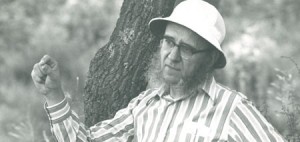
James Harvey Young
James Harvey Young World’s Fair Film (1933–34), amateur film of the Century of Progress International Exposition. After obtaining a doctorate in history, Young became an expert on health fraud and quackery. He taught at Emory from 1941 until his retirement in 1984.
Film-Makers’ Cooperative
Bogus Boxing Trash, Part One (1969), part one of rock critic Richard Meltzer’s epic film on boxing.
George Eastman House
I’ll Say He Forgot (1920), Malcolm St. Clair’s two-reel comedy about an absent-minded bridegroom.
Hoover Institution, Stanford University
Francis Bishop Film (1930), rare moving images of Soviet Russia taken by an American student of physiologist Ivan Pavlov.
Indiana University
Hoagy Carmichael Collection (1937–38), home movies capturing the legendary composer’s home and social life during his first years in Hollywood.
Keene State College
Louis de Rochemont Footage of Portsmouth, New Hampshire (1943), unfinished town portrait shot by the creator of The March of Times newsreel.
Maryland Historical Society
Ocean City Hurricane (1933), home movies from a vacationing family of the Chesapeake-Potomac Hurricane of 1933 and its aftermath.
Medical University of South Carolina
Robert Petrie Walton Research Films (1950s), experiments testing the effects of medicinal plants on the cardiovascular systems of cats and dogs.
National Archives And Records Administration
The Yellowstone Kodacolor (ca. 1930–32), early Kodacolor home movies of Yellowstone National Park.
National WWII Museum
A-1 Airborne Lifeboat (1944), test footage of the A-1 airborne lifeboat, developed during WWII to rescue downed airmen.
Nebraska State Historical Society
St. Augustine Mission School Films (ca. 1936–39), institutional documentation of activities at the Catholic mission school in Winnebago, Nebraska.
New York Public Library
And We Drink and Drown (ca. 1970), short employing the poetry of Lawrence Ferlinghetti to question the educational system; Aspirations (1971), confessional film about a young woman’s development in a patriarchal society; Batteries Not Included (1971), stop-motion animation showing what happens when G.I. Joe meets Barbie; The Flop! (ca. 1967), film about a delinquent who falls to his death while resisting arrest; Life in New York (1969), documentary about the disparities between the Lower East Side and Park Avenue made by Puerto Rican teens; Young Braves (1968), portrait of a group of Puerto Rican teens and their delinquent activities.
Newark Public Library
Essex Mountain Sanatorium Films (ca. 1938), two films about the tuberculosis treatment facility in Verona, New Jersey.
NOAA National Severe Storms Laboratory
Union City, Oklahoma Tornado (1973), scientific documentation that helped scientists improve the ability to forecast tornado activity.
North Carolina State Archives
North Carolina State Fair (ca. 1974), a daylong glimpse of the Raleigh-based event, including an appearance by Bob Hope; Scott for Lieutenant Governor (ca.1964), campaign ad for Robert W. Scott.
North Scituate Public Library
Lewis J. Boss Collection (early 1930s), community portraits of North Scituate, featuring hand-tinting and humorous intertitles, by a local amateur filmmaker.
Oregon Historical Society
Grunts and Groans (1933), amateur film documenting the Portland Turnverein Gymnasium; The Haunted Camera (1938), supernatural thriller made by a teenage girl; John Makes Whoopee (1929), amateur narrative about a young farmer visiting the “big city” of Portland, Oregon.
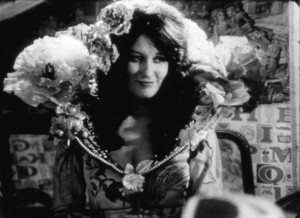
“Sparkles Tavern,” Sparkle (Melinda McDowell) takes the stage. BAMPFAA
“Sparkles Tavern,” Sparkle (Melinda McDowell) takes the stage. BAMPFAA
Pacific Film Archive
Sparkles Tavern (1984), independent feature by Bay Area filmmaker Curt McDowell.
Senator John Heinz History Center
Joseph Pegnato Collection (ca.1940s-50), home movies of big band, vaudeville, and circus performers shot by juggler “Bobby Jule.”
Silent Cinema Presentations
The King of the Kongo: Episode 6 (1929), episode from an early sound serial featuring Boris Karloff.
Tulane University, Amistad Research Center
African American Carnival Balls (1955–56), Mardi Gras carnival balls captured by photographer Robert Green.
UCLA Film & Television Archive
The Jungle (1967), vivid portrayal of Philadelphia street life starring and made by African American gang members.
University of Akron
Goodyear Tire & Rubber Company Films (1931–33), 35mm nitrate film of the construction of the U.S.S. Akron, one of the largest airships of its time.
University of Arizona
Mission San Xavier del Bac (1968), film about the historic Spanish Catholic church and its Tohono O’odham communicants; Yaqui De Grazia (1938–1940), documentary about the Yaqui Easter ceremony, featuring the paintings of Ettore “Ted” De Grazia.
University of California, Berkeley, Survey of California and Other Indian Languages
Verdena Parker Collection (ca. 1959–66), home movies showing life in and around the Hoopa Valley Indian Reservation in Humboldt County, California.
University of South Carolina, Moving Image Research Collections
Kate Gleason Collection (1928-1931), home movies from the pioneering engineer and businesswoman.
University of Southern California, Moving Image Archive
Pro Patria (1932), documentary by actor Guillermo Calles about his 3-month road trip from Los Angeles to Mexico City.
Washington University in St. Louis
A Regular Bouquet: Mississippi Summer (1964), recruitment film for activists involved in the “Freedom Summer” voter registration campaign, made by Richard Beymer from West Side Story.
Wisconsin Historical Society
Lunt and Fontanne Collection (1928–39), home movies from Ten Chimneys, the Genesee Depot estate of renowned theatrical couple Alfred Lunt and Lynn Fontanne.
Yale University
Kapauku (1950s), feature-length documentary about the Papuan tribe of West New Guinea shot by anthropologist Leopold Pospisil.
Previous Post: The Man Who Filmed Early Anchorage
Next Post: Preserving the Colors of Yellowstone

